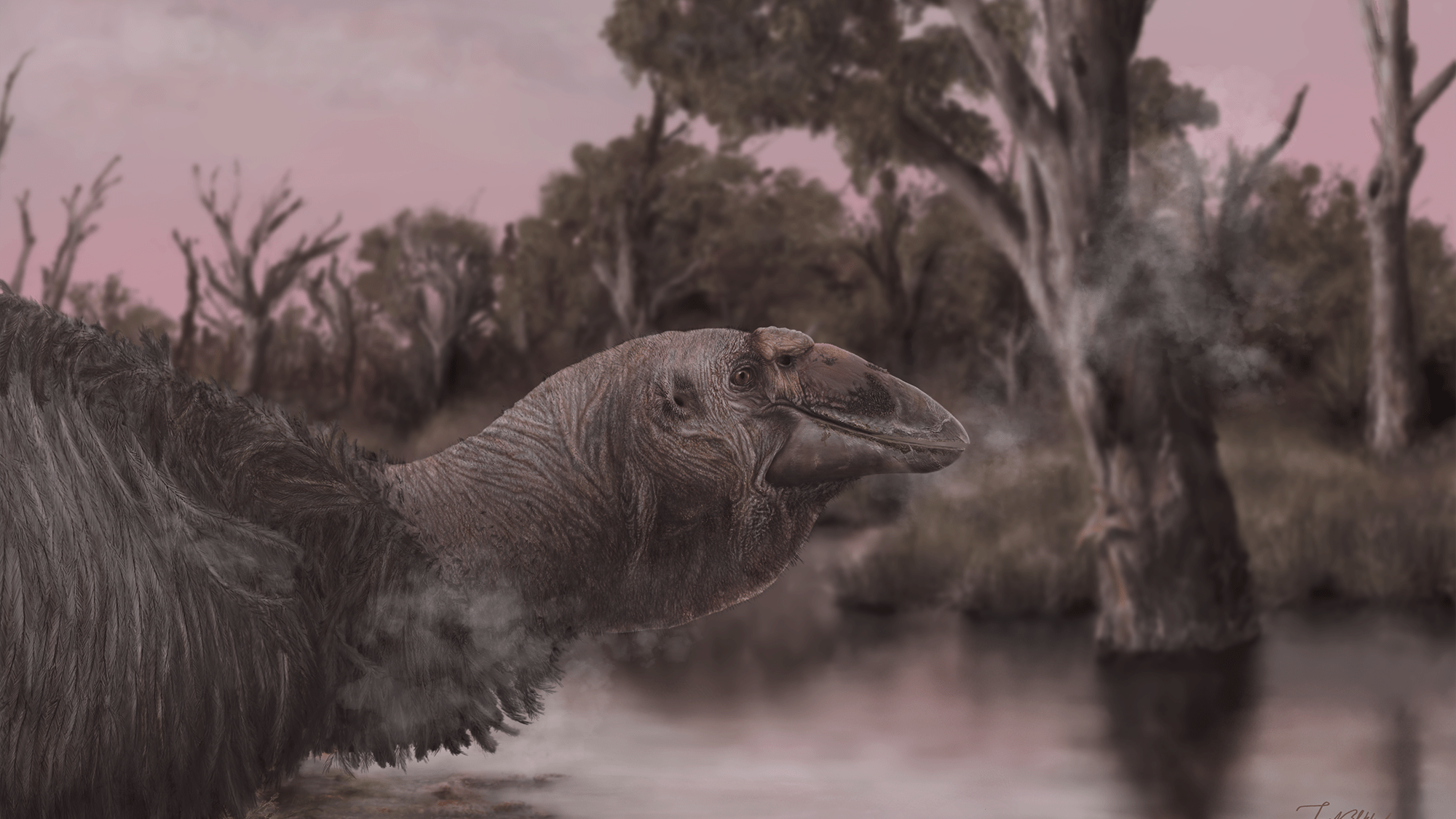Australia has always been a biodiversity hotspot, with some gnarly extinct megafauna in its natural history. Enormous, flightless ‘thunder birds’ or mihirungs once roamed the rugged Australian outback. The last remaining mihirung species was the roughly 6.5 feet tall Genyornis newtoni. These stocky birds went extinct about 45,000 years ago–living alongside humans for a bit. Now, after over a century of digging, researchers in Australia have uncovered a complete skull of this giant goose-like bird for the first time. The specimen is described in a study published June 3 in the journal Historical Biology.
[Related: An extinct 10-foot-long eagle could pick up kangaroos with its terrifying talons.]
Parrot or something else?
Previously, the only known skull for this mihirungs species was a heavily damaged specimen discovered in 1913. Very little of the original bone was remaining, so paleontologists could not deduce much about the skull of this species.
In 2019, a team from Flinders University found these new fossils near Lake Callabonna, a remote region of inland South Australia. The skull fossils were associated with some nearly complete fossils of the rest of the bird’s body. With this extra piece of the skeleton, the team confirmed that the skull is likely that of Genyornis newtoni.
With this more complete skeleton in hand, the team is able to explore more of the animal’s ecology, build, and its evolutionary relationships. They believe it clocked in at about 507 pounds–about the same as two and a half kangaroos put together. Its skull reveals a massive braincase, with large jaws. Its upper beak also had a surprising form, which sets it apart from its closest relatives.
“Genyornis newtoni had a tall and mobile upper jaw like that of a parrot but shaped like a goose, a wide gape, strong bite force, and the ability to crush soft plants and fruit on the roof of their mouth,” study co-author and Flinders University paleontology PhD candidate Phoebe McInerney said in a statement.
A giant goose
Parts of the well-preserved skull also had some similarities to South American screamers and the Australian Magpie goose.
“The exact relationships of Genyornis within this group have been complicated to unravel, however, with this new skull we have started to piece together the puzzle which shows, simply put, this species to be a giant goose,” said McInerney.
According to study co-author and Flinders University vertebrate paleontologist Trevor Worthy, this fossil of the upper bill particularly helped them “put a face on this bird, one very different to any other bird, yet like a goose.”

Analyzing the skull also gave the team a better idea of how this giant prehistoric goose’s head would have functioned.
“The form of a bone, and structures on it, are partly related to the soft tissues that interact with them, such as muscles and ligaments, and their attachment sites or passages,” study co-author and PhD student Jacob Blokland said in a statement.
[Related: Australian cockatoos are teaching each other to open trash cans.]
To live in their more aquatic habitat, Genyornis also likely had some unusual adaptations that kept their ears and throat safe from an influx of water when submerging their heads under water. However, these adaptations may be linked to their extinction since the formerly fresh water bodies in northern South Australia are now primarily salt lakes where they couldn’t survive.
The team hopes that further study of these special prehistoric geese will deepen understanding of these birds and their ultimate disappearance.

